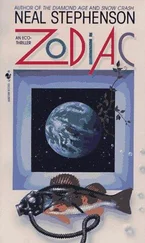H2 had originally been planned as the basis of a large space tourism operation. Rhys’s original mission, for which he’d been planning and training for two years, had been to get that up and running. It had a new purpose now, of course, but functionally it would look the same: H2, the big central module, with a new and larger torus rotating around it. That new torus, inevitably called T2, was going to be assembled in space from a kit of rigid and inflatable parts, some of which had been shipped up packed inside of H2, others to follow later on subsequent launches. For the time being, H2 had four fat spokes extending from it to terminate in stubs where other parts, forming the rim of the wheel, would be added later.
The Scouts by then had achieved their basic mission, which had been to employ the Integrated Truss Assembly as a backbone to support a tree of hollow pipes, each about fifty centimeters in diameter, with wide spots every ten meters or so. A human being, provided they were reasonably fit, and did not suffer from claustrophobia, and did not have too much stuff in their pockets, could move through a tube of that diameter, somewhat like a hamster scurrying through a plastic tube in a cage. The wide spots were there so that two people going opposite directions could pass each other. Spherical modules served as connectors and branch points. The tubes terminated in docking locations where spacecraft of various types could lock on to the space station and establish solid, airtight seals.
For it had been obvious from the beginning that docking sites were going to be, in the lingo of Pete Starling, “the scarce resource,” “the long pole,” “the critical path.” Building rockets, spacecraft, and space suits was no easy matter, but at least these things happened on the ground, where colossal resources could be thrown into beefing up production. An armada of space capsules hurled into orbit would have nowhere to go, however, unless they could dock somewhere. And the docking sites had to be built the hard way: on site, in orbit.
Docking was no joke, and required specific technology, but it was thoroughly understood and it had been done many times. The Chinese space program had standardized on the same system used by the Russians, so their spacecraft, like the Russians’, could dock at the ISS. So far so good. But the fact remained that every manned spacecraft launched into orbit needed to reach a specific destination within a couple of days’ time, before the occupants ran out of air, food, and water. The task of the Scouts, therefore, had been to vastly increase the number of docks in the quickest and cheapest possible way. Docks couldn’t be too close together, so the distances between them had to be spanned by hamster tubes. Bracketed to the outside surfaces of those tubes, and still being installed by fresh waves of Scouts, were runs of plumbing and wiring, and structural reinforcements tied into the adjacent trusses.
The initial tube tree, built between about A+0.29 and A+0.50 by Tekla and the other first-wave Scouts, sported half a dozen docking locations. These were spoken for immediately by the first wave of so-called Pioneer launches: three Soyuz spacecraft, two Shenzhous, and a space tourism capsule from the United States.
Encouraged by the success of the launch that had carried Bo and Rhys, the Russians had found ways to cram five or six passengers on each Soyuz.
The Shenzhou spacecraft was based on the Soyuz design, except larger, and updated in various ways. Like the Soyuz, it was meant to carry a crew of three — but this was based on the assumption that those three would want to return to Earth alive. Modified for one-way trips, each Shenzhou carried half a dozen. And the American tourist capsule brought a complement of seven astronauts.
So, all told, the first wave of Pioneers brought three dozen people to Izzy, more than doubling its population. They were obliged to live in their space capsules, which had their own toilets, CO 2scrubbers, and heat rejection systems. This made for crowded conditions, but it was a step up from the Luks.
On A+0.56, when the H2 module came up on the giant Falcon Heavy rocket, Tekla and the other surviving Scouts spent a day pulling out all that had been stuffed inside of it and anchoring it temporarily to the outside of the module. They then moved into H2, turning it into a Scout dormitory and saying goodbye to their increasingly tatterdemalion Luks, which were deflated, patched, folded up, and stored for later use in emergencies.
About two-thirds of the Pioneers had previous experience doing EVAs or had been hastily trained over the last few weeks. There were not enough space suits to go around — these were being produced as fast as possible on the ground — but the existing ones could be shared. Work shifts were shortened from fifteen to twelve hours, and then to eight, so that fresh bodies could be rotated through the available suits two or three times a day. The spacewalkers divided their time between assembling the T2 torus and extending the tube trees to provide docking space for the next wave of launches.
The remaining Pioneers, the non-spacewalkers, devoted themselves to other activities inside the pressurized parts of the space station. Dinah found herself with two assistants: Bo, who had seemingly assigned herself to the task, and Larz Hoedemaeker — the guy from the video. Larz was a young Dutch man who had been pursuing a graduate degree in robotics at Delft when he had been recruited by Arjuna Expeditions. Dinah knew him as a prolific email correspondent, always willing to answer her questions or supply code patches on short notice. Owing to some lapse in communications, she hadn’t even known that he would be one of the passengers on the American tourist capsule that had arrived on Day 52 (for people were now dropping the A+ notation and simply referring to days by their numbers).
All she knew was that a large strawberry-blond man suddenly appeared in her shop, intent on hugging her. This was unusual. To put it mildly, the International Space Station, until now, had never been the kind of place for surprise visits.
Larz had a fistful of chocolate bars in one hand and a camera in the other, and all manner of stuff was spilling out of the pockets of his coverall: vials of morphine, antibiotics, reels of microchips on paper tape, disposable contact lenses, condoms, packets of dehydrated coffee, tubes of exotic lubricants, spare leads for mechanical pencils, bundles of zip ties. The policy now seemed to be that everyone being packed onto a ship first had to be so laden down with vitamins that they could hardly move.
Larz was an enjoyable person, and his first day on Izzy was pure fun for Dinah, who had not been able to have a face-to-face conversation with a colleague in a year. She showed him around the shop, such as it was, and let him drive robots around on the surface of Amalthea, and brought a few of her “Grimmed” robots in so that he could admire them. For, inspired by Rhys’s comment of a few weeks ago, Dinah had been putting her otherwise idle robots to work making armor for other robots. The orderly way to do it would have been to bring pieces of the asteroid back to her little zero-gee smelter and produce nice little ingots of pure steel, then weld them onto the frames of the Grabbs. But this was making things too complicated. Amalthea was already made out of perfectly sound material. Maybe it was not structural-grade steel, but it was good enough to serve as radiation shielding. So she had just been slicing pieces of it off, leaving them in their original rough shape, and armoring Grabbs with overlapping plates of the stuff. They looked like walking asteroids now.
“It is an art project,” Larz said. For a moment she thought he was trying to insult her. Because she had met a few engineers in her day who never would have combined art and engineering. But his face was happy and guileless, and it was clear that he was paying her a compliment.
Читать дальше
Конец ознакомительного отрывка
Купить книгу





